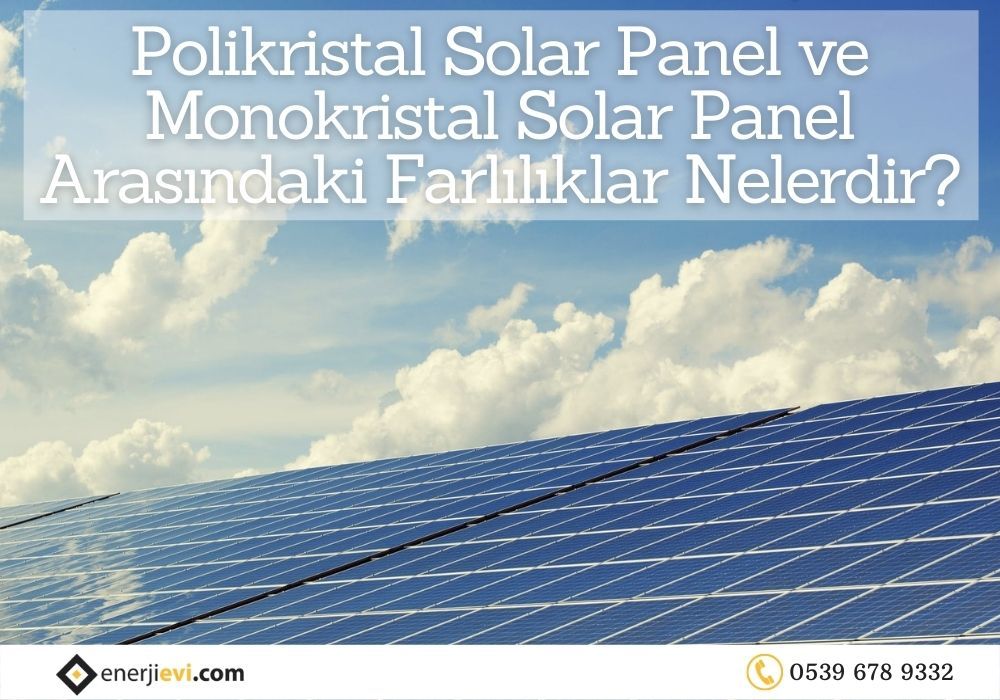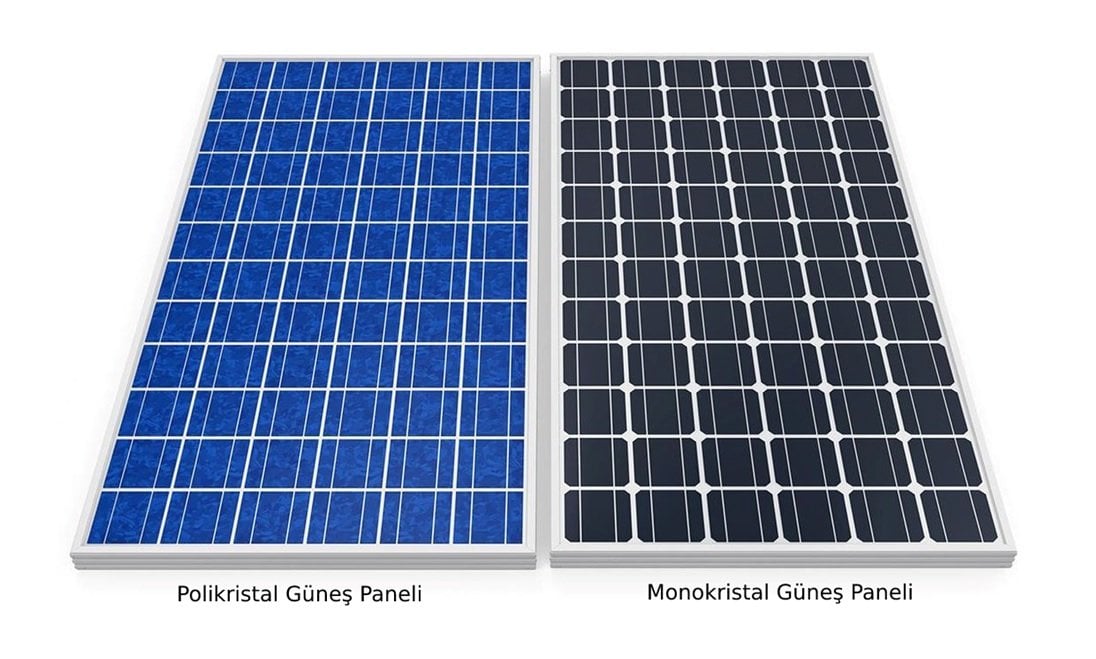What are the Differences Between Polycrystalline Solar Panel and Monocrystalline Solar Panel?
25-11-2021
12:57

History of Solar Panel;
Edmond Becquerel made the discovery of the "photovoltaic effect ", which would allow sunlight to be converted into electrical energy. In 1893, Charles Fritts , after Becquerel, invented the first true solar cell, which was formed by coating selenium sheets with a thin layer of gold. The first device we know as a solar panel has emerged.
Russel Ohl , an American inventor, patented the world's first silicon solar cell in 1941. With this invention, the first solar panel was produced in 1954. The first widespread use of solar panels was in space satellites. It entered most people's lives in the 1970s with the first solar panel calculator.
How Does Weather Affect Solar Electricity Generation?
Weather conditions affect the amount of electricity produced in solar systems. In order to achieve maximum efficiency in solar energy systems, quality materials should be preferred, a specialist company should be worked with and a clear sunny day is required. As with most electronic materials, hot weather reduces efficiency in solar panels. As the temperature increases, the panel generates less voltage and therefore less electricity. Humidity also reduces productivity.
While solar panels are more efficient in cold weather, there is more sunshine in summer than in winter. Therefore, although the panels are less efficient at high temperatures, there is more electricity production in summer than in winter.
Solar What is Solar Panel?
It is also known as solar panel, solar panel, electric panel in the market. The watt-volt values of the panels are searched according to their brand and cells. For example, Tommatech 24 Volt 330 Watt Monocrystalline Solar Panel, which is among our most preferred models.
Solar panels are used to absorb sunlight and convert it into electrical energy. Solar panels are a collection of solar (photovoltaic) cells used to generate electricity through the photovoltaic effect by design.
Cell types available in the market are divided into two as Polycrystalline and Monocrystalline. Cells form the solar panel with parallel and serial connections. In the photovoltaic (PV) module, the mounting types of solar cells vary according to the power of the panels. Cells are assembled with arrays such as 4x9, 6x10, 6x12. Cell arrays are visible on the surface of the panels.
What are the Distinctive Features of Polycrystalline Solar Panel and Monocrystalline Solar Panels?
Choosing between Polycrystalline and Monocrystalline solar panels when installing a solar power system for businesses and residences is an important step in the engineering process and budgetary work. How did you decide which type of solar panels about what is right for your business while we will answer you with some orientation issues;
To help you determine the best choice for your solar installation, we will examine the similarities, differences, costs and efficiency ratios between the two types of solar panels – advantages and disadvantages for each other. Solar panels, monocrystalline solar panels and polycrystalline solar panels are constantly compared with each other. Differences between panel types are important distinguishing features for panel selections.
Polycrystalline Solar Panel and Monocrystalline Solar Panel What are the Differences?
The first difference is the visible cell types and colors. Monocrystalline solar panels cells consist of a single pure silicon crystal. A polycrystalline solar panel, on the other hand, consists of many silicon parts.
While Monocrystalline Solar Panels are dark blue and are lozenges, Polycrystalline solar panels are light or dark blue in color as a result of the production process of solar cells. In addition, the cells are arranged in a rectangular shape. While this distinctive feature is still being used, the factories started to work with new generation monocrystalline cells. Some brands of monocrystalline energy panels have the same color of cells, but the cell arrangement is rectangular like polycrystalline energy panels. We can say that the production process of solar cells is the cause of the differences in appearance between the panels.
The average efficiency of Polycrystalline Solar Panel cells is 14-16%. The efficiency rate of monocrystalline solar panel cells is around 24%. Although polycrystalline solar panels have a lower temperature coefficient than monocrystalline solar panels, they have better temperature tolerance. Polycrystalline panel production is simpler and less costly. The amount of waste silicon is less. However, in practice these differences are ignored. Monocrystalline solar panels save space compared to polycrystalline solar panels with their high wattage in the market. You can easily use polycrystalline and monocrystalline solar panels in the market in commercial enterprises, agricultural irrigation systems, caravan systems, boat systems, vineyards and garden systems.
You can visit our website for the necessary materials and prices for the systems. You can also find out the necessary information by calling us at 0539 678 9332. There are panels on the market starting from 5 watts to 340 watts. Polycrystalline panels such as 5W, 10W, 22W, 42W, 65W, 85W, 105W, 125W, 170W, 275W, 280W, 285W, 340W can be found. With the developed technology, the panel powers produced from time to time vary. E.g; While there are 250-watt polycrystalline solar panels from the old, there are 285-watt polycrystalline panels.
With the changing market conditions, the raw materials of monocrystalline solar panels are more easily accessible. For this reason, monocrystalline panels are increasing in production. There are panels on the market starting from 25 watts to 340 watts. Monocrystalline panels such as 12W, 25W, 50W, 100W, 150W, 205W, 230W, 340W, 410W, 450W, 455W, 465W can be found. Halfcut panels produced with developing new technologies are taking their place in the market.

